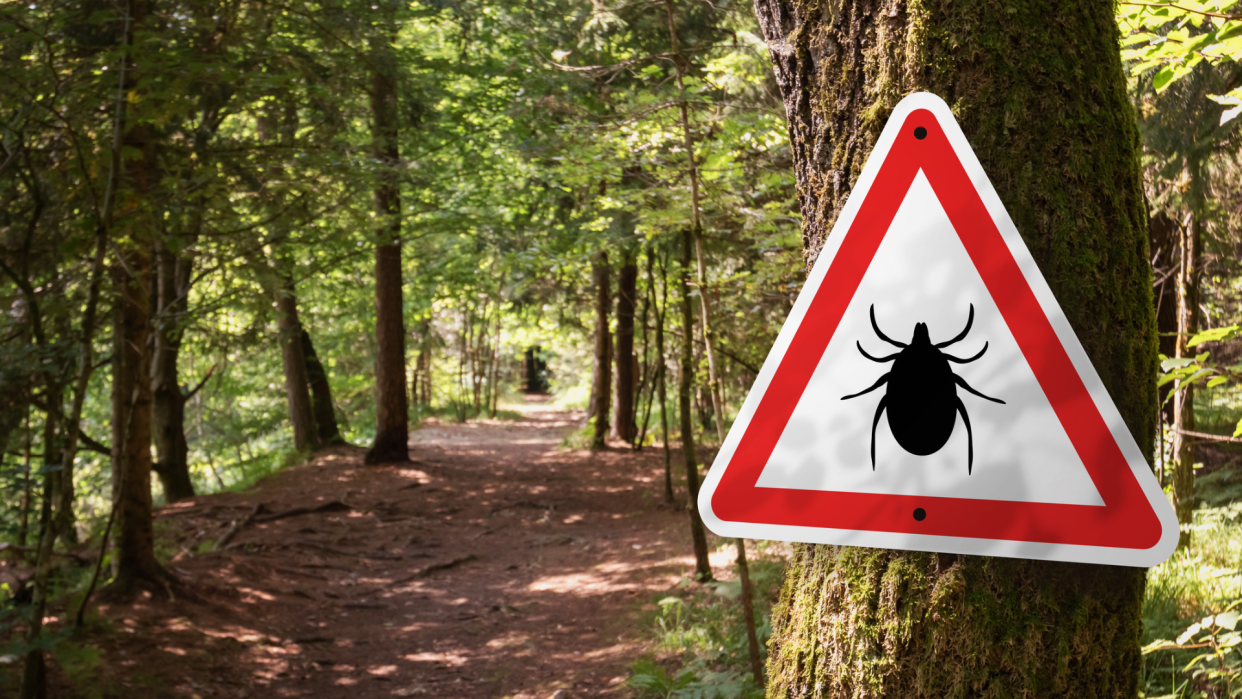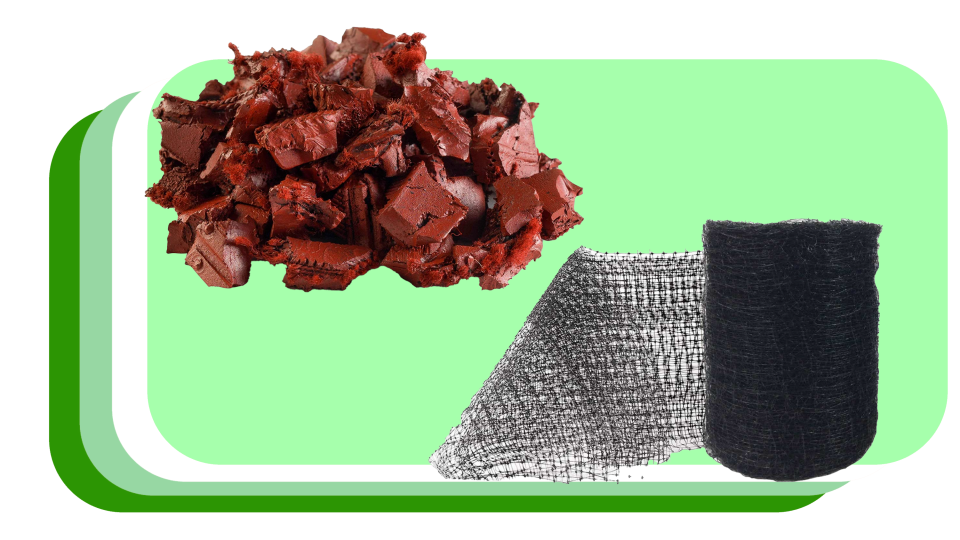Cases of tick-borne illness, babesiosis, are rising—here's how to stay safe

— Recommendations are independently chosen by Reviewed’s editors. Purchases you make through the links below may earn us and our publishing partners a commission.
While the warmer weather of spring means that you can spend more time outside, unfortunately, insects are enjoying it just as much as you are. As temperatures rise, so do the number of tick sightings. As revealed in a recent study published by the Centers for Disease Control and Prevention (CDC), ticks can spread babesiosis, a tickborne disease that has doubled in cases in the Northeast over the past several years.
It's important to educate yourself and others on the disease to identify effective ways to protect against it. We’re here to walk you through it all.
Make smart choices without hours of googling. Subscribe to The Checklist newsletter for expert product advice and recommendations.
What is babesiosis?
Babesiosis is a disease spread by the parasite Babesia microti, which is carried by blacklegged ticks. It can also be spread via blood transfusion, though Peter James Krause, MD, Senior Research Scientist in Epidemiology and Medicine at Yale University, notes that this is rare.
Babesiosis parasites infect red blood cells and can result in the loss of said cells, which may cause various heart conditions including irregular heartbeat and heart failure. The severity of cases ranges from asymptomatic to life-threatening for elderly individuals, those without spleens or those with compromised immune symptoms as a healthy spleen can help remove babesiosis cells, just as a healthy immune system can. Symptoms usually develop within a few weeks or months from the initial tick contact.
Where is babesiosis?
“The study found that there was a marked increase in the cases of babesiosis in the Northeast since 2011,” states Krause. “Maine, New Hampshire and Vermont went from sporadic to endemic,” meaning that these states went from having cases of the disease every few years to having at least 10 cases every year. According to Krause, one of the reasons for the spread of babesiosis is climate change, as it effectively increases the range of time that the ticks can carry babesiosis.
Babesiosis incidents are also becoming increasingly common in Massachusetts, Rhode Island and Connecticut, in addition to the states listed above. Outside of New England, it can be found in New Jersey, New York, Minnesota and Wisconsin.
Can babesiosis be treated?

“Medications are available to treat babesiosis and can be prescribed by a doctor,” says Megan Swanson, an epidemiologist at the CDC’s Division of Parasitic Diseases and Malaria, as well as one of the authors of the CDC’s babesiosis report. “People who do not have any symptoms or signs of babesiosis usually do not need to be treated.”
Symptomatic individuals are usually diagnosed by examining blood specimens under a microscope. If Babesia parasites are seen inside their inside red blood cells, that means they are infected, according to Swanson.
Babesiosis symptoms
Symptoms of babesiosis include fever, chills, sweats, headache, body aches, loss of appetite, nausea and fatigue. In more severe cases, according to the New York Department of Health, symptoms can include blood clots, organ failure, unstable blood pressure and death.
“About 20% of adults who are infected are asymptomatic,” Krause reports. “Most younger people will see only mild symptoms that are indistinguishable from other mild viral infections. If you have symptoms, you should see a physician and get treated,” he says, as moderate and severe cases don’t typically resolve on their own.
Babesiosis vs other tick diseases
Babesiosis is spread by Ixodes scapularis ticks or black-legged ticks. Black-legged ticks, named for their dark legs that contrast with their lighter abdomen, are also the ticks responsible for the spread of Lyme disease. All tick-borne diseases are initially spread when a tick bites a human after drawing a blood meal from a previously infected host such as a rat.
Can pets contract babesiosis and other tick-borne diseases?
“There are species of the Babesia parasite that can infect pets and domestic animals, but they are different from the species that cause babesiosis in humans,” says Swanson. “If a pet owner is concerned, they can speak to their veterinarian. All tickborne diseases can be prevented in pets by using tick prevention products.”
What to do if you find a tick on you
If a tick manages to latch onto you, don't panic. Using a pair of fine-tipped tweezers, carefully remove the tick, taking care not to break it while it’s attached to you or agitate it, as doing so can cause it to regurgitate into you. After it’s removed, place it in a plastic bag for easier identification when you decide to visit a doctor to make sure you're healthy.
How to prevent ticks
One of the easiest ways to avoid ticks is by avoiding areas where they thrive, such as forests. If you must go through these areas or happen to live there, you should wear long sleeves and tuck your pants into your socks. This gives a tick less chance to get on your skin. These action steps to avoid babesiosis will also help you avoid other tick-borne diseases. Beyond this, there are also various products that make avoiding ticks easier.
Apply insect repellant

Insect repellant can keep many pesky, biting bugs at bay including mosquitoes, horseflies and ticks. One of the most trusted repellants is the compound DEET, which has been in use since the 1940s and is approved by the Environmental Protection Agency (EPA). While DEET is toxic to birds and fish, its use isn’t expected to bring them harm. While the EPA says that DEET is safe to use on pets, the American Society for the Prevention of Cruelty to Animals (ASPCA) states that DEET can cause neurological problems in animals. To be safe, you should use the pet-specific tick treatment below. If you're looking for a more natural repellant, try the oil of lemon eucalyptus, which is a synthesized plant oil and EPA-approved.
Try permethrin clothing treatment

Permethrin is another compound commonly used to ward off bugs. When applied to clothing and gear (such as nets, tents and sleeping bags), it kills any bugs that come in contact with it. The amount of it used in clothing is safe for human-use, according to the EPA. Permethrin is toxic to cats, so be careful about wearing treated clothing—or forego it entirely—if you have cats. If you're looking to use it to keep ticks away, we recommend this spray from Sawyer Products. With over 17,000 five-star ratings, reviewers love this product for its effectiveness and the amount of spray per bottle that lasts through many uses.
Clean up with a mower and rake

One way to keep ticks away is to destroy the environment they thrive in. This means keeping your lawn maintained by raking away leaves and mowing the grass to keep it low. For mowing, consider our favorite lawn mower, the Honda HRN216VKA, which is powerful and easy to maneuver. As far as our favorite rake goes, we prefer the Truper Tru Tough 24-inch Leaf Rake for its lightweight and comfortable build.
Install gutter guards

Ticks can thrive in the leaves packed in your gutter. We recommend getting a gutter guard to stop the accumulation of debris. The best one we tested is the FlexxPoint 30 Year Gutter Cover System. We love it for its durability, easy installation and excellent debris blockage.
Pet flea and tick treatment

Having a furry friend can increase your odds of having a tick visitor as they latch onto your pets and get tracked into the home. As such, the CDC recommends treating your pet for ticks, too, for their health and your own. Frontline sells some of the highest-rated flea and tick treatments on Amazon for dogs and cats. Reviewers love the treatment for its effectiveness and value.
Create physical barriers

The use of physical barriers can also keep ticks away from you and your family. According to Krause, placing wood chips, gravel or other materials to act as a barrier will make your yard less attractive to ticks. Furthermore, a deer fence will give the parasites one less avenue to infiltrate your home as deer are one of the many carriers of ticks.
Use tweezers

If, despite all your preparation, a tick does manage to latch itself onto you, use a pair of fine-tipped tweezers to remove it with precision like this pair on Amazon with thousands of positive reviews. Hold onto the tick by putting it in a plastic bag and save it for your doctor to examine.
The product experts at Reviewed have all your shopping needs covered. Follow Reviewed on Facebook, Twitter, Instagram, TikTok or Flipboard for the latest deals, product reviews and more.
Prices were accurate at the time this article was published but may change over time.
This article originally appeared on Reviewed: Babesiosis tick disease: How to protect yourself from illness

